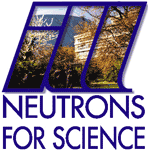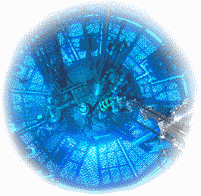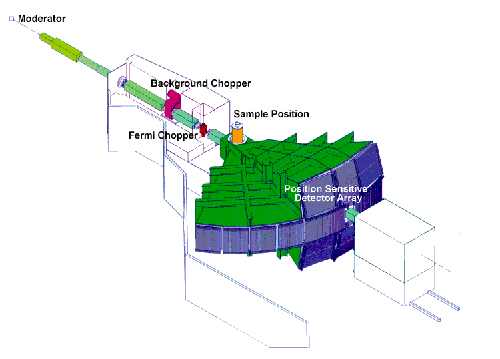Central Facilities
Neutron Scattering
The first requirement for a neutron scattering experiment is a source of neutrons. Our reputation for neutron scattering studies has allowed us access to many of the best centres for such investigations world-wide. We use a wide range of neutron techniques including elastic, inelastic, and small angle scattering measurements using both continuous and pulsed neutron sources.
At present, most of our neutron scattering studies on superconducting and magnetic materials are carried out at spallation sources such as ISISLink opens in a new window at the Rutherford Appleton LaboratoryLink opens in a new window(RAL) in Oxfordshire, SINQLink opens in a new window at the Paul Scherrer Institute (PSI) in Switzerland, and the SNSLink opens in a new window at the Oak Ridge National LaboratoryLink opens in a new window (ORNL ) in Tennessee, USA as well as the reactor source at the Institut Laue LangevinLink opens in a new window (ILL) in Grenoble France.
 Link opens in a new window Link opens in a new window |
||
|
|
||
|
View into the heavy water vessel at the ILL. The blue light is Cherenkov radiation |
||
Neutron Scattering: Instrument Development
As well as carrying out neutron scattering experiments studies on a whole range of materials, we are also involved in the development of new neutron spectrometers and the enhancement of existing facilities, to be used by us and other scientists from around the world.
Don McK. Paul was the Principal Investigator on a project to construct MAPSLink opens in a new window a Multi Angle Position Sensitive spectrometer. This machine, based at ISIS-RAL, was the first of a new generation of neutron inelastic scattering spectrometers. Construction of MAPS was followed by a 2 year period scientific commissioning involving many scientists within the UK neutron scattering community.
MAPS is now a fully operational part of the neutron spectroscopyLink opens in a new window suite of instruments based at ISIS.
|
|
|
Schematic of MAPS, a spectrometer at ISIS. |
A high field cryomagnet designed for use with small angle neutron scattering instruments was funded through the 1998 JREI. This grant was held jointly with Prof. Ted Forgan at the University of Birmingham.
Neutron Scattering: Experimental reports and scientific highlights
Experimental reports and highlights of the science carried out at various neutron scattering facilities can be found in the annual reports published each year by these institutions. Please follow the links below if you want to know more:
- Institut Laue Langevin reportsLink opens in a new window
- ISIS Annual ReviewsLink opens in a new window
-
Oak Ridge National Laboratory scientific highlightsLink opens in a new window
High Magnetic Fields
We perform measurements at the high magnetic field field facility in Oxford UniversityLink opens in a new window. We also travel to the National High Magnetic Field LaboratoryLink opens in a new window in the USA and the High Magnetic Field Laboratory in Grenoble (the Laboratoire National des Champs Magnétiques IntensesLink opens in a new window (LNCMI)) to carry out magnetisation, heat capacity, and transport measurements. These facilities provides experimental access to high magnetic fields for scientists from all around the world and have a number of (Bitter, superconducting, and hybrid) magnets providing steady magnetic fields of up to 45 T, and pulsed magnetic fields of between 60 and 100 T (and even higher with single turn systems).
 |
Laboratoire National des Champs Magnétiques Intenses (LNCMI)Link opens in a new window |  Link opens in a new window Link opens in a new window |
Synchrotron Radiation
We also use synchrotron radiation sources that produce intense beams of x-rays. We mainly use the ESRFLink opens in a new window in Grenoble and DiamondLink opens in a new window in south Oxfordshire. We use beam lines such as I16Link opens in a new window are optimised for the study of electronic and magnetic properties of solids, in particular magnetic, charge and orbital ordering, and are ideal for studies of single crystals of magnetic materials.





